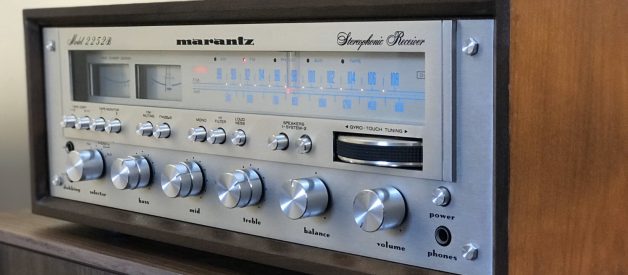The classic 22xx series vs. silver face 22xxB, how they stack-up. Five key differences reviewed.
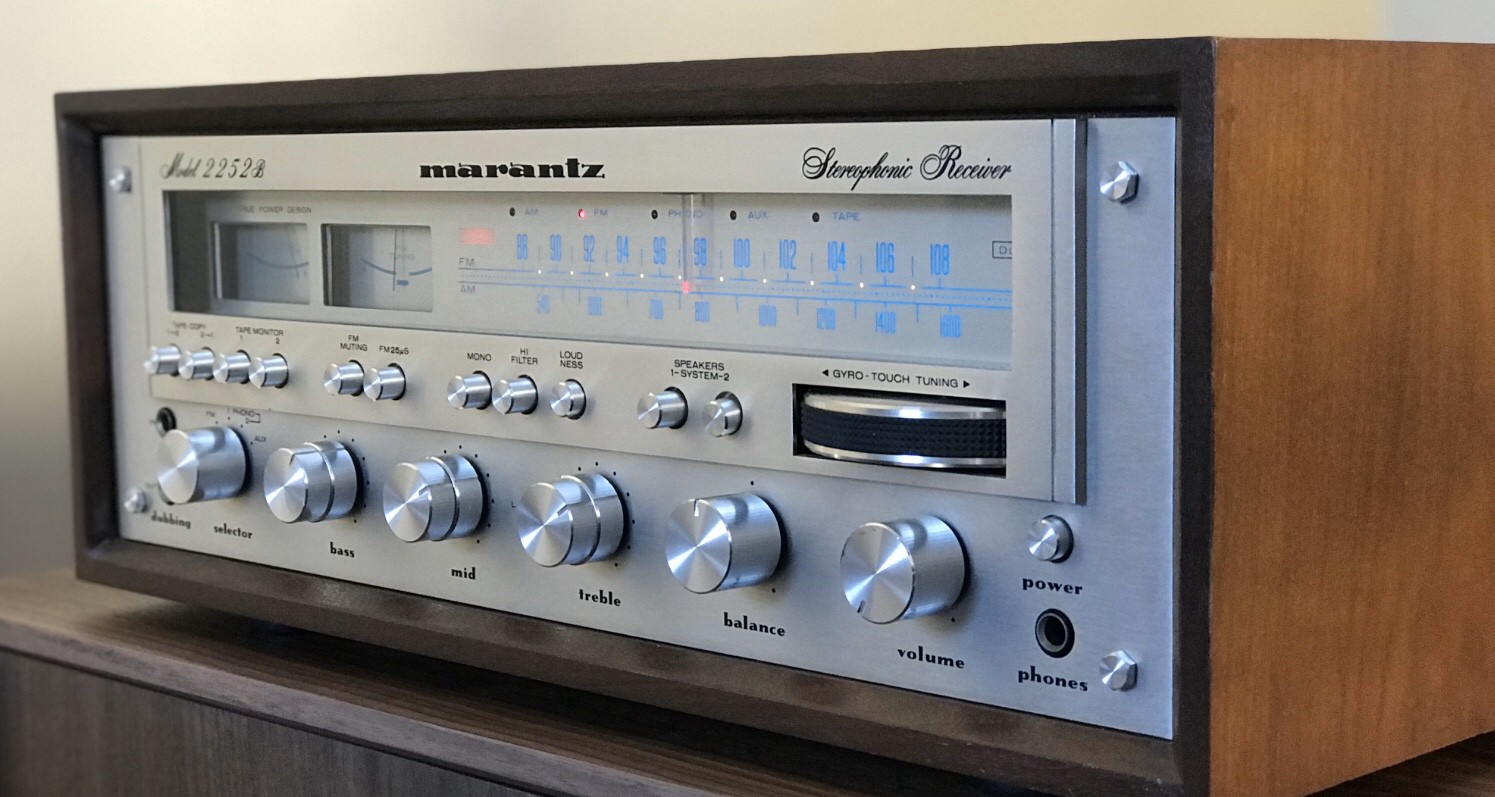
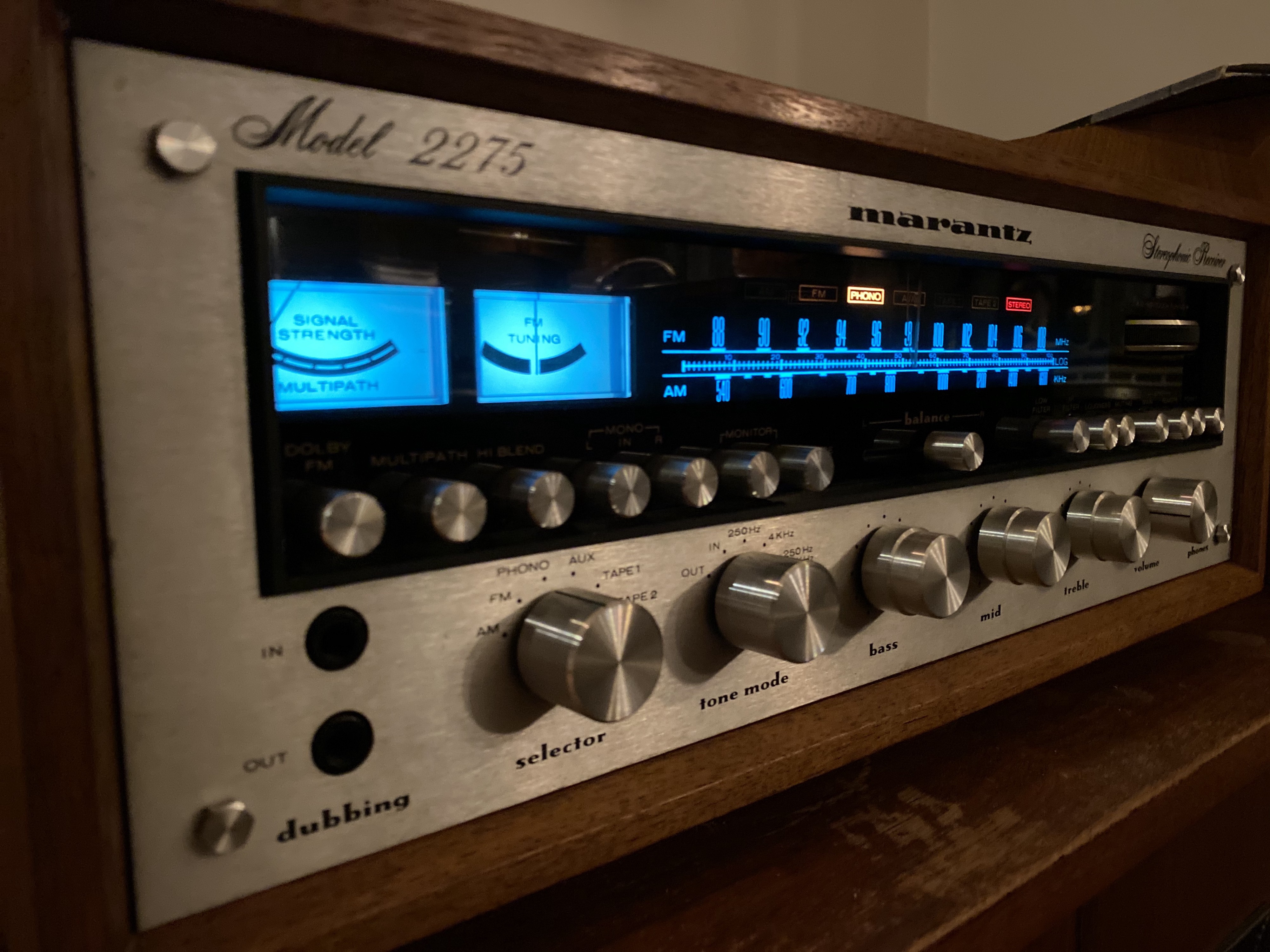 Photos; left the silver face Marantz 2252B with WC-22 Walnut Case, right the classic series Marantz 2275 with WC-22 Walnut Case.
Photos; left the silver face Marantz 2252B with WC-22 Walnut Case, right the classic series Marantz 2275 with WC-22 Walnut Case.
Surely we?ll face the slings and arrows of outrageous feedback for this article ? but so ?B? it, here we go?
Any interaction between vintage Marantz collectors, live or via online forums, will always include the spirited discussions why they have a preference for the classic Marantz 22xx series, or why they love the 22xxB silver face receivers. A simple Google search on this topic, amply exposes the level of passion in these discussions. As an experienced collector of vintage Marantz receivers we have some opinions to share, and we hope this article will help add some fresh perspectives ? alas, we also anticipate it will spark more heated debate.
First let?s look at the line-up of 22xx and 22xxB models. It?s important to note there are a few ?early B? models that aren?t the same design as the 1978 onward silver face 22xxB models.
Marantz 22xx models:
- Classic first generation, models include; 2215, 2216, 2220, 2225, 2226, 2230, 2235, 2238, 2240, 2245, 2250, 2252, 2265, 2270, 2275, 2285
- The early ?B? models include; 2220B, 2230B, 2235B, 2250B
- Silver face 22xxB series ? The modern 1978 ? onwards style models include: 2216B, 2226B, 2238B, 2252B, 2265B, 2285B
How they stack up
- Build quality; overall structure and materials ? advantage Classic and early ?B? models.
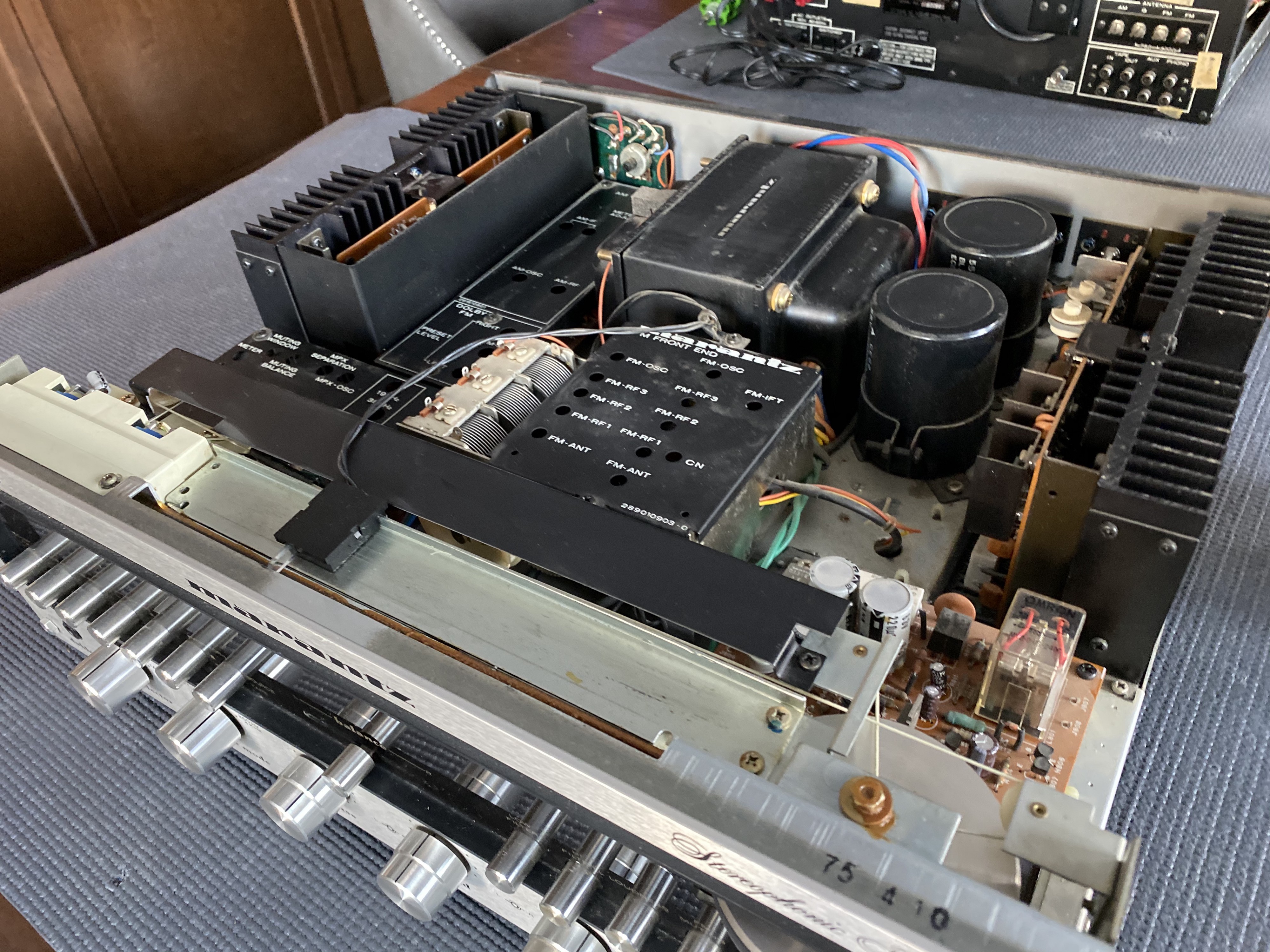 Inside the Marantz 2275, top covered removed.
Inside the Marantz 2275, top covered removed.
Anybody who has ?popped the hood? on the classic 22xx and early ?B? models can attest that the build quality and structure materials are clearly superior to the silver face B models. A simple example; tuner lighting housing in metal, versus plastic housing on silver face 22XXB models. Changing lights on early 22xx models, (while sometimes difficult and confined in space on higher watt models), is far easier to complete successfully compared to on the 22xxB models. The silver face 22xxB models use plastic white housing for the receiver lights ? over time the housing on of these models has become so brittle, the fastening tabs simply snap off during light changes.
Comparing weight of classic Marantz 22xx vs the 22xxb also shows that the 22xxB models demonstrate the early beginnings of decreasing the weight of the overall receiver. An example; the 1975 Marantz 2265 weighs in at 15.9kg vs. the 1978 Marantz 2265B weighing in at 14.5kg???that is a substantial weight difference for same wattage receiver.
2. Reliability ? advantage silver face B models
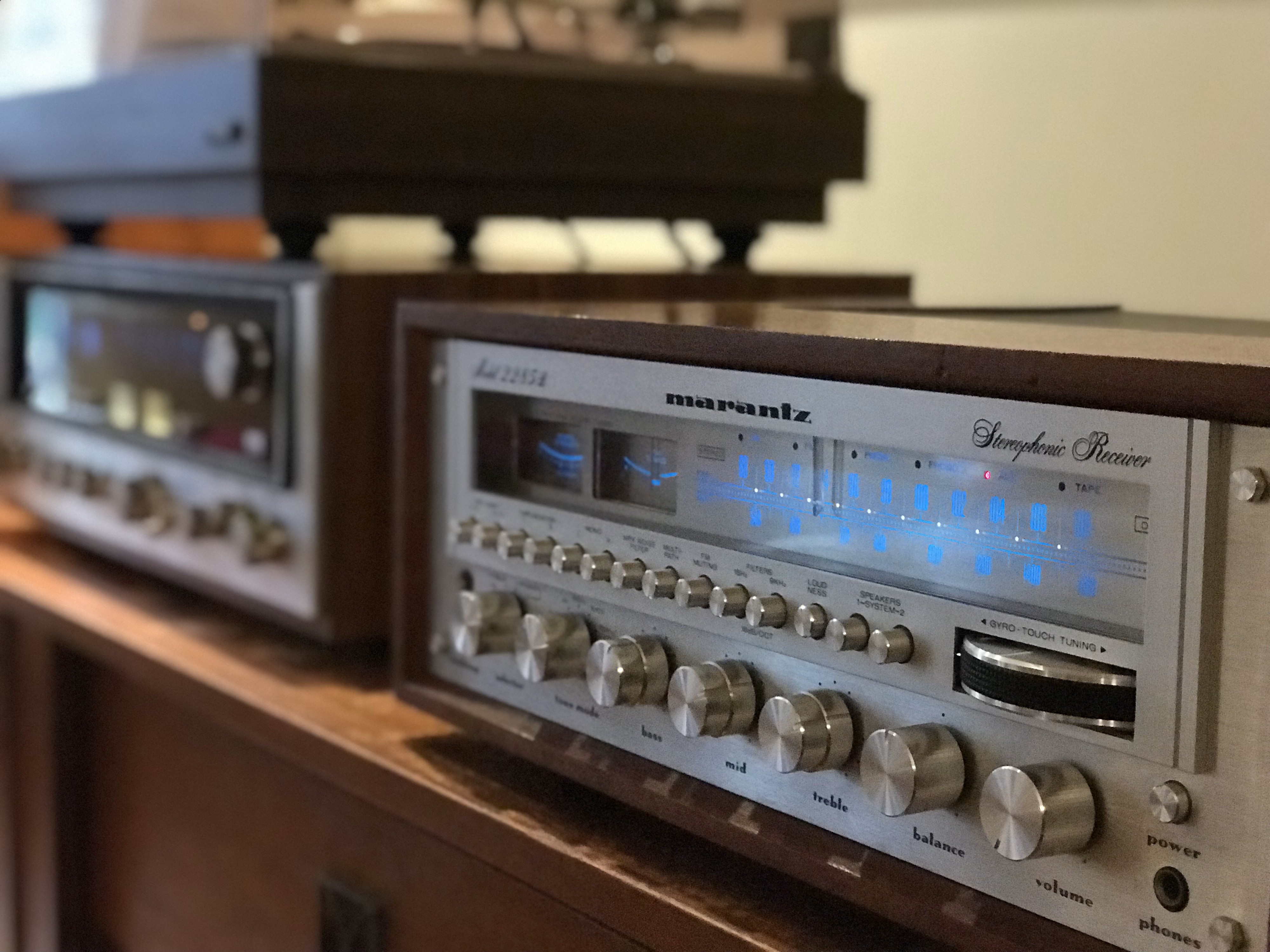 Marantz 2285B with WC-22 Walnut Case, sitting alongside a Sansui 8080 (left).
Marantz 2285B with WC-22 Walnut Case, sitting alongside a Sansui 8080 (left).
No contest here; silver face B models win hands down. The majority of our vintage silver face B models we?ve acquired simply need a thorough cleaning, power them up and most work fine. We?ve not been so fortunate with the classic 22xx series however. Our success ratio with first generation 22xx working properly without an experienced tech check up and some capacitors replaced is very low. Here?s a short list of issues that we have experienced first hand, and we understand to be common with first gen 22xx models.
- Power supply ? many first generation 22xx models require capacitors changed in the power supply board, some models, Marantz 2250, were calling you out here, have a special status of being very unreliable overall.
- Potentiometers ? 22xxB silver face models have more reliable potentiometers ? we experience more poorly functioning pots or worse, failed pots, on first gen 22xx models. Replacing pots is difficult, requires sourcing difficult to find costly used parts, and requires technical capabilities beyond the skill level of the average hobbyist.
- Speaker relays of 22xx models can be fussy???more often than not it?s the solder under the relay, which in many cases requires removing a board for soldering.
- Crack, Snapple and Pop. The classic 22xx series frequently have wayward caps, diodes and transistors, if not replaced can cause noise in one or both channels.
- Single channel failure due to capacitors ? we?re batting around 500 (for you non baseball fans that?s 50%) one channel failed when we find a classic 22xx Marantz. We have not yet found a 22xxB with a failed channel? yet.
- No speaker relays on classic 22xx models up to 2230 ? yikes! No, it?s not ghosts in the machine, it?s the sound of surging caps when you hit the power switch. Turning it off is usually worse ? draining power from main filter caps can result in speakers running on for several seconds with the distorted fuzzy sound of music.
3. Design ? aesthetics, style. It?s a tie.

The classic 22xx Marantz receivers have an undeniable holdover look from the 1960?s early 1970?s ? a clumsy charming ?trying to look modern? style, and it?s magic. Add the Marantz WC-22, Walnut Cabinet and you have a dramatic retro showpiece for any living room (we have another story you may like on that topic here). The 22xx series is purposely designed to not be missed, it is not a wallflower ? the mix of black and white facing make it look heavy and powerful. We prefer the look of the classic 22xx series in the wood cabinet. To quote a vintage Marantz lover in an online forum ??the classic 22xx series without a wood case looks like a hairless cat.?
Our design favourites in the classic 22xx series are the Marantz 2270 for simplicity of design, almost delicate, and the Marantz 2275, same series and style but a different look ? It has a more massive and heavy style large black tuner panel with silver buttons inset. Striking design.
The best way we can describe the Marantz 22xxB silver face series is ?predicting the 1980?s design trend.? Gone is the faux wood metal cover ? now we have matte black case, a full silver face, shiny ?metal worked? knobs that catch the light and reflect a star light pattern onto the face? genius. The design overall is lighter, the tuner dial is now logically placed under the receiver tuner display ? versus inline with the 22xx series ? this gives the tuner panel a sleeker more modern look. The lighting is more delicate and muted, baby blue on silver ? vs the brutish green/blue glow (that exact colour is defined by lights installed, LED, or fuse lamps and how old the velum paper behind your tuner panel on your 22xx series is). The Marantz 22xxB series also included an option for a new walnut cabinet ? model WC-122, which were more modern interpretations and streamlined in design compared the the classic WC-22.
We must admit the 2285B is the pinnacle of the 22xxB series design ? ohhhh that never ending row of buttons. We?ve owned a few ? and when installed in the classic WC-22 walnut cabinet that mix of more modern design with the classic 1970?s cabinet is an amazing design juxtaposition.
4. Features and functionality ? It?s a tie.
This will be a short summary. Hands up if you use the MPX filter every time you use your receiver? Multipath? Mono Left only? How about Mono Right only? you get the idea.
When we acquire a new/old vintage Marantz we love playing with all the buttons ? but over time, other than input selector, tone modes, tone controls and loudness? the remaining knobs/dials/buttons are treated the way they have been with original owner for decades? untouched.
Inputs for tape, phono are virtually the same and as you go up the stack ? higher watt receivers have progressively more input and input control selections.
5. How they sound. Advantage classic 22xx series
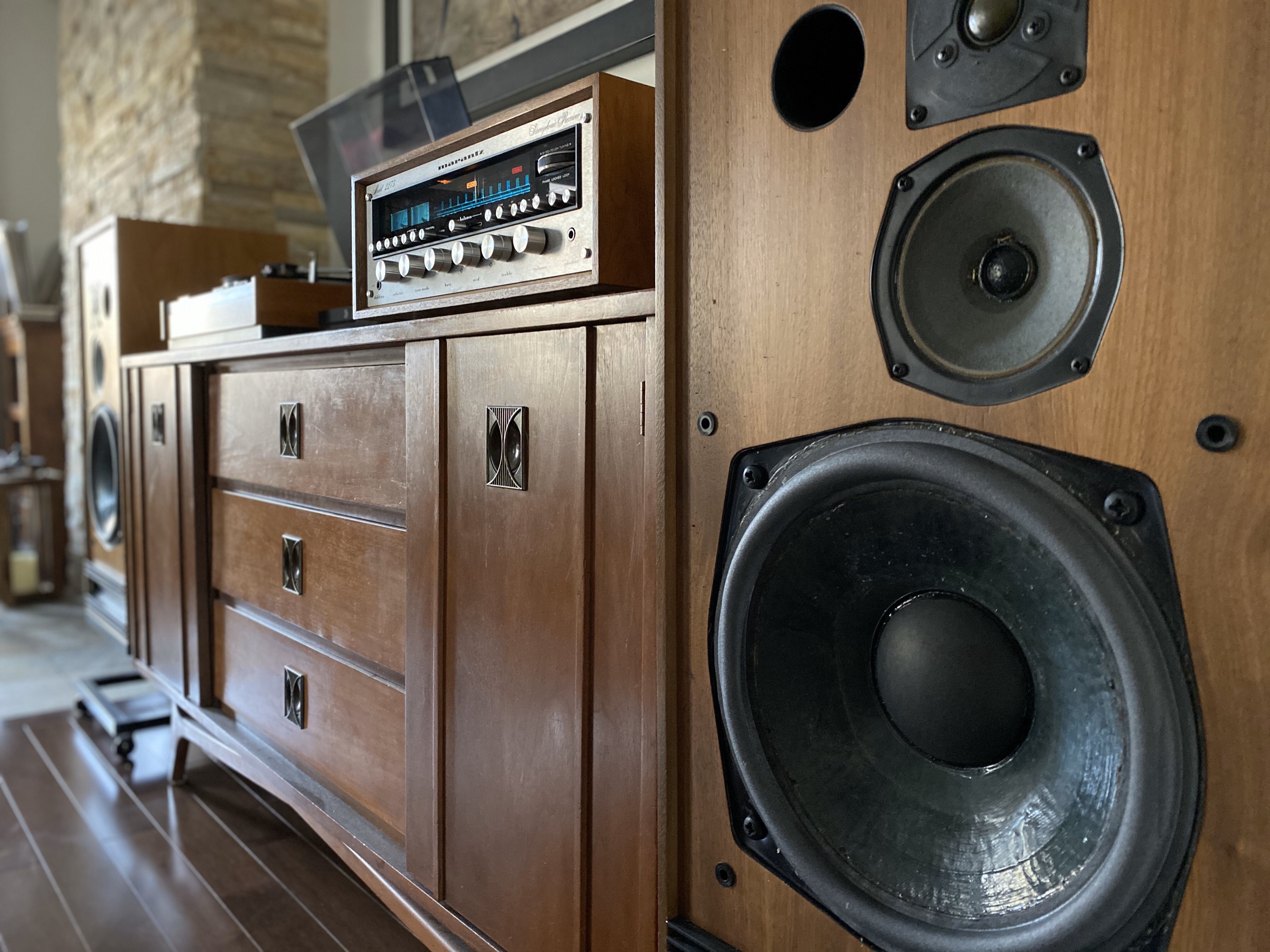
Sound interpretation is very subjective ? we have tested all of the vintage Marantz models we?ve acquired in the same room with the same speakers ? and after experiencing a wide range of the vintage Marantz line, we do have our preference.
Classic 22xx series (including early classic ?B?)
- Wr prefer the higher watt 70 Watts and greater, classic 22xx models with the exception of the 2235B (early B model) which had special warmth and musical sound we loved.
- Higher watt vintage Marantz?s provide a deeper and fuller bottom end (we don?t listen to music loud ? you sense the difference with a higher watt receiver, even at lower volumes)
- While the 2220, 2230 and 2245 have a nice warm sound ? they are missing a bottom end thump
- We like the Marantz 2270 and the Marantz 2275 best ? but we haven?t had the good fortune of finding a classic 2285, yet?
Silver face 22xxB models
- The sound is crisper and lighter, more refined and less warm and less coloured (and some people love this). For our ears ? the music becomes fatiguing over longer listening periods
- We really enjoyed the Marantz 2285B and we understand the the hype and love for that receiver ? it has refined power and looks truly stunning. Side note: We ended up trading our Marantz 2285B for a Sansui 9090 ? and never looked back. (We?ll do a vintage Sansui vs vintage Marantz shootout in an upcoming a article)
While overall we like the Marantz 22xxB series ? when we rotate back to the classic 22xx series the difference is immediately evident ? for us the A/B test has one winner. (Pun intended)
Finding and restoring a vintage 1970?s Marantz receiver can be labour of love. These vintage receivers have once again become centrepieces in living rooms around the world. If you choose the classic 22xx or the silver face B models, you?ll own a classic piece of HiFi gear with a remarkable and warm 70?s sound.
We hope this article provided some new insights ? we?re happy to hear from you and please do follow us on Twitter for micro vintage reviews and shootouts. @HiFisetup
Copyright 2020 Mark Scott, HiFisetup
